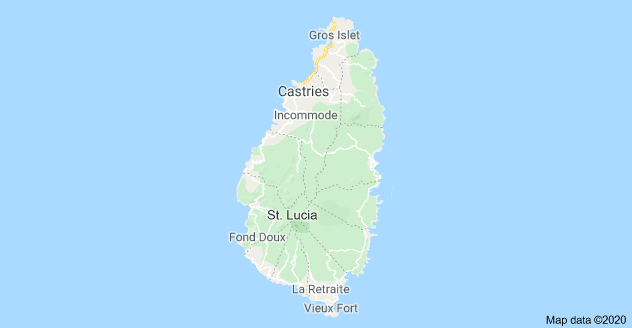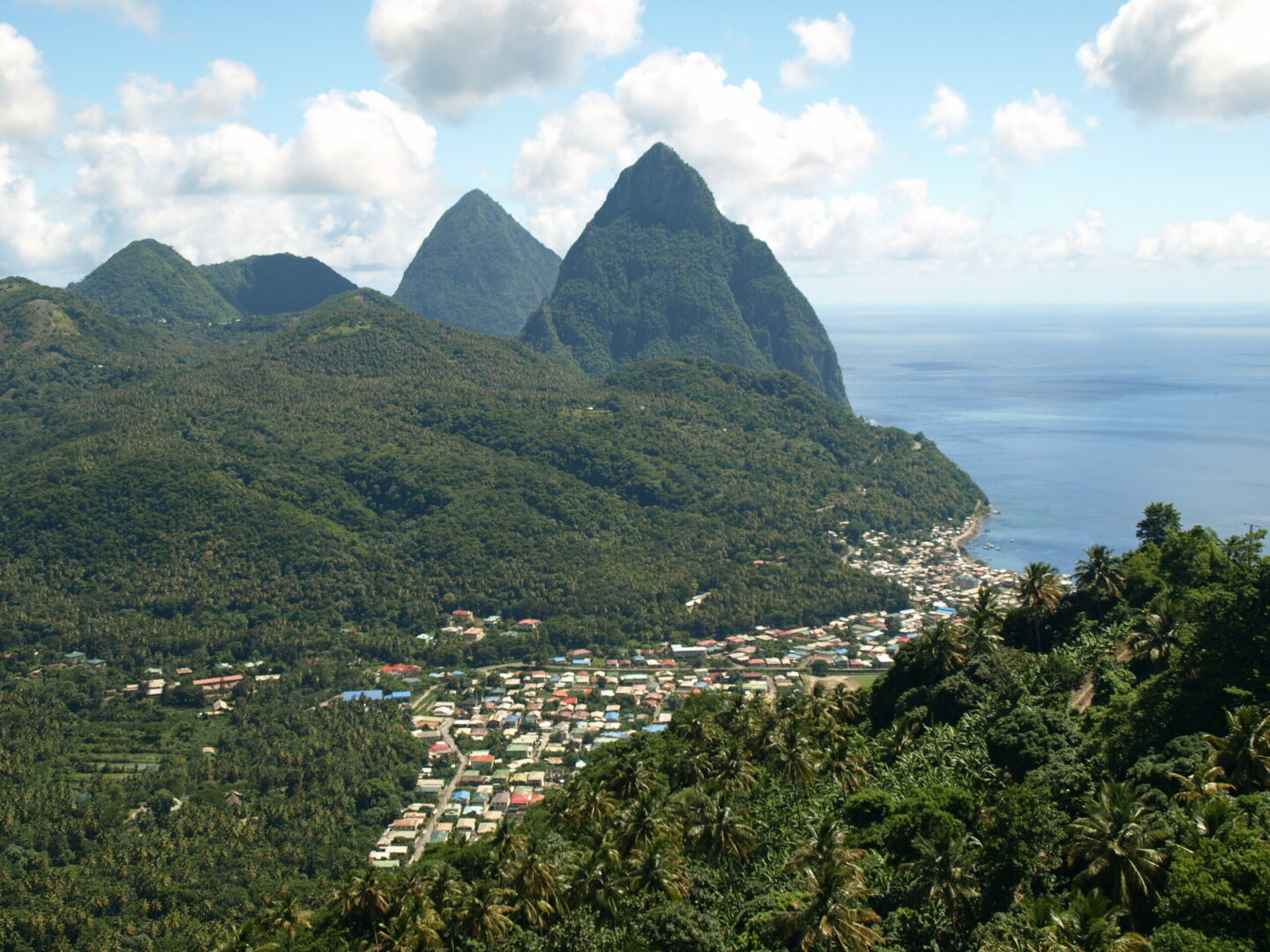Description
St. Lucia General Tour:
3 hours
This island is a Heritage Site that is also a great nature escape. Take a look at the sulphur springs and see the immense natural beauty this island paradise has. Very similar to nothing, the Grand Pitons is one glaring example of the volcanic origin of this island paradise. As these two tall slender mountains start to appear before your eyes it’s not something you will soon forget. We take you at very high elevations stopping at locations that produce Casava Bread and locals selling handmade keepsakes or cultural gifts in between stops tasting fresh fruits growing in the forests or prepared traditional beverages throughout the day.
Lots of information and scenic routes to explore in the hills and mountains of St. Lucia as we do on this augmented, comprehensive, and Inclusive General Tour covering all the important history at each stop, one of them being to eat lunch.
Morning Tour
9:00 A.M. (on this tour schedule you can shop or swim (optional) from 11:30-1:30 +/- have lunch, and be back to your ship or locale by 2:00 – 2:30 P.M.)
Afternoon Tour
12:00 P.M. (on this tour schedule you can swim (optional) from 2:30 +/- have a late swim until 3:30 and be back to your ship or locale by 4:00 P.M.
– Marigot Bays (25’) ; small tour (10’)
– Sulphur Springs (50’) ; quick visit (20’)
– Back to the ship at Castries (1h)
Adults- $75.00
Children (13 years and under) $65.00
(4 years and under Free- 2 maximum per couple)
St. Lucia Locater
Saint Lucia: Named after the
Located:
Size: 238 sq mi (606 sq km)
Capital: Castries
Population: 168,458
Highest Elevation: 2,681 Grand Piton and second highest 2,415 Petit Piton
Annual Rainfall: 47 – 150” variable
National Flower:
National Bird:
Language: English and Patois (a French dialect)
Religion: Catholicism, Seventh Day Adventist, Pentecostal
Government: Parliamentary democracy
Economy: Agricultural exports, Tourism, Industry and manufacturing
Local and National Holidays
Notes:
St. Lucia
1. Caribs named it Hewanorra (Hiwanarau- Land of Iguanas)
2. French named it St. Alouzie
3. French/ Swedish linguistic historical connection named St. Lucia
Named after the festival of Saint Lucia ( Sankta Lucia -Swedish) which begins before dawn on the thirteenth of December – which would land on Christmas day today (in those days they used the Julian Calendar; until 1753).
This Festival of St. Lucia is based on a legend of Lucia’s generosity and her oppression. The legend turned into a celebration around Europe and was celebrated on the darkest night of the year.
St. Lucia West Indies today, is a not-to-big and not-to-small island where the people speak a broken French creole language due to the French influence. There has been a British influence seeing that the two countries fought to the bitter end for sole control of its rich vegetation and tall hills that create precipitation and pulls water from the clouds naturally irrigating the topography. St. Lucia was definitely created from volcanic activity and has the sharp peaks and sulphur springs to prove it.
The economy is diverse: agriculture, manufacturing industrial, tourism, and construction. Self ruling bicameral parliament with 11 senators, 17 House of Assembly representatives that has the burden of power in serving the populace with legislation, St. Lucia has been independent since 1979 and was immediately accepted as a United Nations member.
Agriculture has long been a major part of the economy both Colonially and as an independent nation in this 3,117 highest peak, 238 square mile; 27 mile long and 14 miles wide 163,000 populated island.
- Included in the windward government in 1838
- Saint Lucia Labor Party formed in 1951
- Participated in the Eastern Caribbean Federation Conference in 1962
- United Workers Party 1964 under founder John Compton a lawyer and farmer
- Internal self government of a State in 1967 with voluntary association with Britain
- Full independence in 1979, on February 22 ending the United Workers Party leadership.
-
St. Lucia Timeline
- 200 A.D. Arawaks
- 800 A.D. caribs
- 1499: Juan de la Cosa possibly was the first European to discover St. Lucia, not Columbus like many people thought for many years and no one knows who actually named it Santa Lucia in memory of the virgin who was killed in Sicily for her Christian Hebrew faith; except that the name itself is linguistically connected to a Swedish origin as these spiritual people’s names were used by the Finns and Greeks before the French. The French being exposed to these religious martyrs adapted the terms of their predecessors. The celebrations in Sweden of this saint surrounding this saint was enormous.
- 1511: A Spanish Royal Cedula shows St. Lucia as part of Spanish colonial territory in the New World.
- 1550: Francois de Clerc settled and attacked Spanish vessels.
- 1600: Dutch settlers built Vieux Fort.
- 1605: 67 Englishmen sailing on board the Olive Blossom landed somewhere in St. Lucia on a voyage to El Dorado (Guyana).
- 1613: Colonial government by Britain lasted until 1763.
- 1638: Captain Judlee of St. Kitts with about 400 men took some control of St. Lucia.
- 1639: Sir Thomas Warner of Britain tried to settle but the Caribs killed some and drove others out.
- 1642- 1650: The French West Indian Company established a colony of St. Lucia.
- 1650 – 1664: It was controlled by the French Duparquets.
- 1660: A peace treaty was reached between the Caribs and the French.
- 1664: The famous Indian Warner son of an Indian woman from Dominica and General Warner of Great Britain making him a mixed heritage Indian on the side of Great Britain attacked the French settlers; one of the many battles between them, Indian Warner sailed from Dominica for battle after organizing 500 plus Carib Indians.
- 1674: St. Lucia was annexed to Martinique.
- 1763: Consideration and discussions were underway to move the capital to another close by location. The treaty of Paris was signed and it turned St. Lucia over to Britain. These events were the impetus for Great Britain to take more control of its territories.
- 1765: Frenchmen started the sugar cane agricultural and it sub products at Vieux Fort.
- 1768: St. Lucia was annexed to Martinique.
- 1770: Jean Baptiste Bideau was born in Desruisseaux.
- 1779: Conquered by the British.
- 1780: Hurricane destroyed and temporarily set back the great advancements that were attained in the burgeoning sugar industry and the settlements of twelve parishes that were established.
- 1782: The Battle of the Saints took place with the English under Admiral George Rodney sailing through the Dominica Passage to fight against the French under de Grasse in Martinique defeating them.
- 1785: Castries the capital was named after Marechal de Castries where the capitals name was Le Carenage before which was synonymous with the tradition of careening boats upon land to clean of barnacles, seaweed, algae etc.
- 1795: Saw the bloodiest battle between the French and the British colonists.
- 1796: Saw the surrender of St. Lucia to the British.
- 1812: Castries was destroyed by fire.
- 1814: France ceded St. Lucia to Britain after fighting and exchanging hands 14 times.
- 1817: A privy council was established in Great Britain to administer the colonies this lasted until 1832 when legislative councils was set up to micro manage the colonies on each island separately.
- 1827: English commercial law was introduced.
- 1838: Slavery was abolished.
- 1839: Yellow Fever killed 13 people.
- 1842: Yellow Fever killed 9 people.
- 1863: Coaling industry was established and lasted until the early 1920’s.
- 1905: British troops withdrew.
- 1920: St. Lucia suffered economically with the end of the coal boom.
- 1924: St. Lucia achieved some gains in government due to the islander’s desire for more self government, still more representatives were appointed by the colonial powers and outnumbered the elected officials.
- 1925: John Compton is born nearby in Canouan; St. Vincent.
- 1927: A major fire destroyed many buildings in Castries.
- 1935: A new constitution was drafted and enacted but still did not grant full autonomy for the natives.
- 1938: Lord Moyne from Britain was sent to assess the viability of a self governing St. Lucia and he found that the people had enough sophistication, education, and an unquenchable desire to govern themselves.
- 1942: A German Submarine torpedoed two ships
- 1943: During World War II America built military bases and some infrastructure like roads and airport.
- 1948: A terrible fire destroyed Castries and it was rebuilt in a modern way making it one of the best capitals in the Caribbean in terms of the organization and convenience etc.
- 1951: St. Lucians over 21 were given the right to vote.
- 1954: John Compton begins his political career after winning his first election.
- 1958: St. Lucia joined the West Indian Federation.
- 1960: A new constitution was instituted and the minister of government was appointed, that same year saw the overseeing of the construction of roadways, airports and other infrastructural developments.
- 1962: West Indies Federation was disbanded.
- 1964: John Compton became the Chief Minister
- 1967: The islanders were granted self governing status and the old constitution ended through the efforts of John Compton and blasted Great Britain for not addressing other issues in their development as a former sovereignty like trade, aid and migration.
- 1979: St. Lucians received the long awaited freedom with a new independent status which was achieved at last through the hard work of John Compton. He was voted out of power that same year but returned to power in 1982.
- 1996: Compton makes a farewell address.
- 1997: John Compton was knighted by Queen Elizabeth II.





